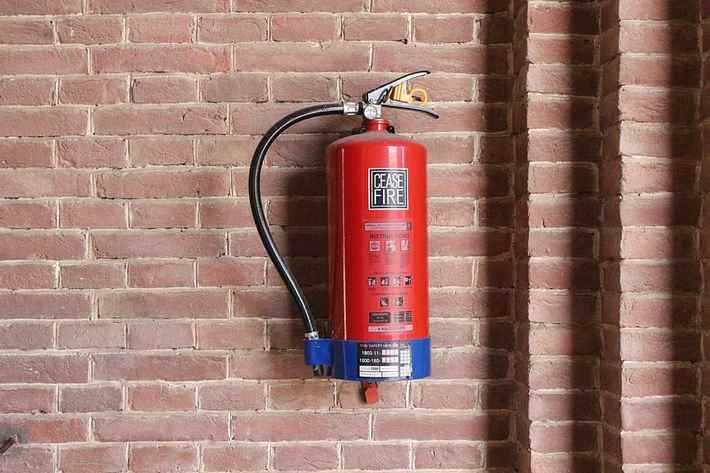Glossary
- Home
- About Us

Glossary
Fire SafetyCommon Terms of the Industry
Common Types of Fire Extinguishers
ABC Extinguishers
Dry powder extinguisher rated for:
- “A” Common combustibles like trash or wood
- “B” Grease, oil and flammable liquids
- “C” Electrical equipment
K Class Extinguishers
Liquid extinguisher used primarily in restaurants for cooking grease and oil fires.
CO2 Extinguishers
Carbon Dioxide gas extinguisher used mostly for trash and electrical fires.
Manufacturers
The company that designed and manufactured a piece of fire safety equipment. Some common manufacturers are:
- Ansul
- Buckeye
- Pyro Chem
- Amerex
- Kidde
- Badger
- First Alert
Fire Safety
P.A.S.S.
Acronym used to teach the user how to operate a fire extinguisher.
- “P” Pull the pin from the handle
- “A” Aim the discharge hose or nozzle at the base of the fire
- “S” Squeeze the handle to start spraying the dry chemical
- “S” Sweep the discharge nozzle side to side
Stop, Drop and Roll
This is a simple catch phrase that helps us to remember that if your clothing catches fire:
- Stop moving
- Drop to the ground
- Roll like a barrel to extinguish the fire
Professional Services
Fire Marshal
A trained and licensed professional responsible for enforcing fire code regulations in businesses and investigating fires.
Registered Company
A firm that has licensed technicians to inspect, install and maintain fire safety equipment.
Licensed Technician
An individual licensed to inspect, install and maintain fire safety equipment. Areas of specialty may include fire extinguishers, kitchen systems, fire alarms, sprinkler systems and more.
NFPA
National Fire Protection Association offers standards for inspection, testing and maintaining fire systems and equipment.
Equipment Maintenance And Service
Annual Inspection
Every business is required by law to have their fire extinguishers inspected annually by a licensed technician. Suppression systems in restaurants are required to be inspected semi-annually.
5 or 6-year Fire Extinguisher Service
Every 5 or 6 years, depending on the type of extinguisher, a fire extinguisher must be disassembled, inspected, serviced and rebuilt according to NFPA standards.
Hydrostatic Test
Every extinguisher must undergo a hydrostatic test on a set schedule depending on the type of extinguisher. It is filled with water and pressure tested to usually 3 times the normal operating pressure to ensure it is structurally sound.
Inspection Tag
A state approved tag placed on a fire extinguisher or system by a licensed technician after an inspection. This tag will indicate the service provided and the status of the equipment.
Service Collar
A solid ring placed on the fire extinguisher, stamped with the year and month, indicating when it was disassembled and rebuilt.
Tamper Proof Seal
A plastic tie that is placed around the pull pin of a fire extinguisher to prevent it from accidentally falling out. These break when the pull pin is being pulled out. They should have the year stamped on them.
Restaurant Systems
Suppression (Hood) System
An automatic system that actively monitors the temperature above the cooking area. At a pre-determined temperature, the system will discharge chemical on the cooking surface to extinguish a fire.
Hood
The metal duct work above the cooking equipment that vents cooking fumes and heat away from the building. The hood contains the heat detectors or fusible links for the suppression system.
Fusible Links
Metallic links that are inline with a spring-loaded cable system that melts at a pre-determined temperature. When the link melts, the suppression system activates. These links are located within the hood directly above the cooking equipment.
Control Head
A panel that connects all components of a suppression system. It senses when a fusible link melts and then activates the system to spray chemical on the fire. It may also set off a fire alarm.
Pull Station
It’s mounted to the wall near the cooking equipment. You can manually pull the metal ring on the station which initiates the suppression system and sprays chemical on the fire.
Agent Cylinder
A tank containing the liquid chemical used to extinguish a fire. The size depends on the amount of cooking equipment to be protected.
